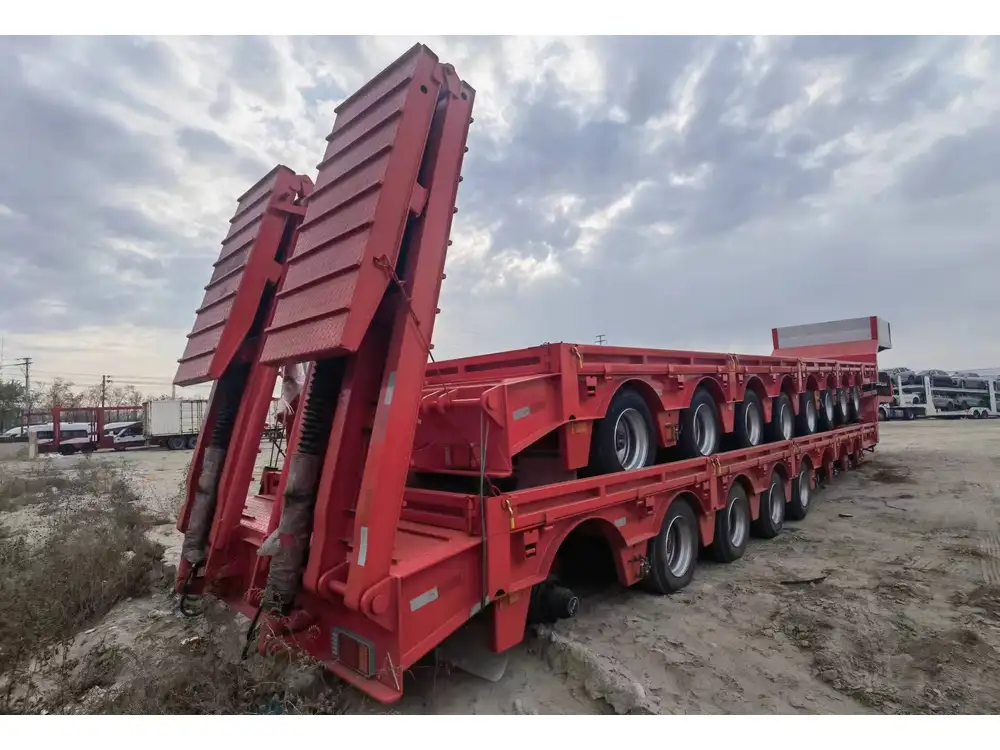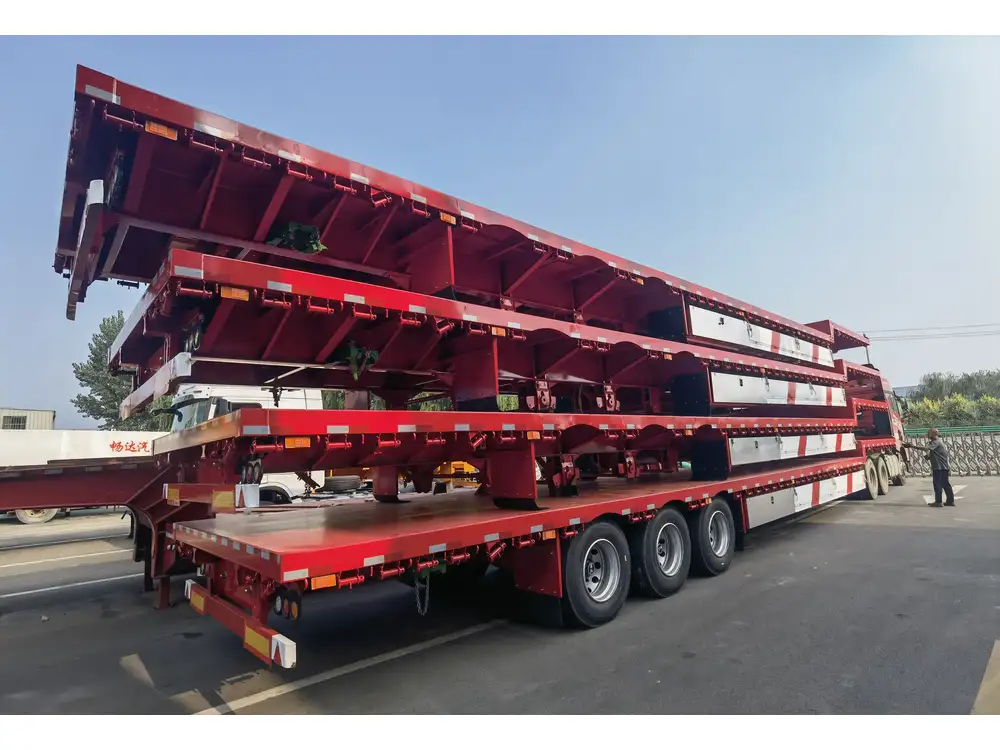Dump trailers are a vital asset in a variety of industries, particularly for those dealing with construction, landscaping, or heavy-duty hauling. They provide an effective solution for transporting and unloading materials like soil, gravel, or debris, simplifying labor-intensive processes. Understanding the intricacies of how to operate a dump trailer can significantly enhance efficiency and safety. This guide delves into every aspect of dump trailer usage, ensuring you maximize its potential and avoid common pitfalls.
1. Understanding Dump Trailer Types
Before diving into operational specifics, it’s essential to recognize the different types of dump trailers available. Each type serves distinct purposes, and knowing the difference will help you make an informed choice.
| Type of Dump Trailer | Description | Best Used For |
|---|---|---|
| Standard Dump Trailer | Features a bed that raises to dump materials; often equipped with a hydraulic lift. | General hauling, construction debris, and landscaping. |
| Gooseneck Dump Trailer | Connects to a gooseneck hitch for improved towing stability; generally larger and more robust. | Heavy-duty hauling; ideal for construction sites. |
| Tilt Dump Trailer | The bed tilts instead of raising vertically, utilizing gravity to unload materials seamlessly. | Landscaping and lighter material transport. |
| End Dump Trailer | Similar to standard trailers but with a hinge at the rear, allowing for dumping at a higher angle. | Heavier loads requiring substantial elevation for unloading. |
| Side Dump Trailer | Unique design allows unloading from the side; perfect for spreading materials uniformly. | Projects requiring precise material placement. |
Working with the right type of dump trailer for your specific needs is key to achieving optimal results.
2. Pre-Operational Checks
Safety must always be a priority. Conducting thorough pre-operational checks helps prevent accidents and equipment failures.

2.1. Visual Inspection
- Structural Integrity: Inspect for any visible damage, such as cracks or bent structures.
- Hitch and Couplings: Ensure connections are secure and free from wear.
- Tires: Check for air pressure and tread wear; inspect for leaks or damage.
2.2. Functional Checks
- Hydraulics: Test the hydraulic system for leaks and functionality. Operate the lift mechanism to observe movement.
- Brakes and Lights: Ensure all braking systems are responsive and all lights function correctly for visibility.
Failure to address any issues at this stage could lead to severe accidents, work delays, or equipment damage.
3. Proper Hook-Up Procedures
Knowing how to correctly connect a dump trailer to your vehicle is essential for safe towing. Here’s a systematic approach:

3.1. Choosing the Right Vehicle
Ensure your towing vehicle has the adequate towing capacity to handle the dump trailer’s weight, including any load you plan to carry. Refer to the vehicle’s manual for precise specifications.
3.2. Hitching Process
- Positioning: Back the towing vehicle close to the trailer to enable an easy alignment.
- Safety Chains: Cross the safety chains under the tongue and secure them to the vehicle’s hitch.
- Connection: Lower the hitch onto the ball, ensuring it locks securely.
- Electrical Connections: Attach the electrical connector, ensuring all lights and brakes will function.
A poorly executed hitch process can lead to dangerous situations, making it imperative to follow these steps meticulously.
4. Load Management Techniques
Handling the load correctly is paramount for safe operation. Proper loading can prevent accidents and extend the lifespan of the trailer.

4.1. Distributing Weight
- Center of Gravity: Load materials evenly with a lower center of gravity to prevent tipping.
- Weight Distribution: Ensure weight is evenly distributed from front to back and side to side.
4.2. Securing the Load
Utilize tarps or netting to secure loose materials. For heavy loads, utilize tie-downs or straps, ensuring they are rated for the weight you are carrying.
4.3. Maximum Load Limits
Adhere to the dump trailer’s weight limit specification; overloading can strain the hydraulic system and lead to potential failure.

5. Operating the Dump Trailer
Understanding how to efficiently and safely operate the dump trailer is the crux.
5.1. Driving Protocols
- Speed Management: Drive at a moderate speed to maintain control, especially on uneven terrain.
- Turning: Make wide turns to avoid scraping the trailer or losing load balance.
- Avoid Sudden Movements: Sudden acceleration or braking can lead to undue stress on the load and trailer.
5.2. Dumping Process
- Location Selection: Identify a flat, stable area for dumping materials.
- Warning Indicators: Ensure that no one is within the vicinity before starting the dump.
- Hydraulic Operation: Gradually engage the hydraulic system to lift the trailer bed, allowing materials to unload smoothly.

5.3. Post-Dumping Procedure
Once the load is discharged, lower the bed back to its original position and ensure all mechanisms are fully retracted before relocating.
6. Maintenance Essentials for Longevity
Regular maintenance maximizes the lifespan of your dump trailer. Employ these practices to keep it in top condition.
6.1. Routine Inspections
- Lubrication: Regularly lubricate all hinge points and moving parts.
- Hydraulic Fluid Levels: Check and refill hydraulic fluid as needed, ensuring no leaks are present.

6.2. Seasonal Care
- Rust Prevention: Treat the trailer with rust-inhibiting paint or sealant, especially if regularly exposed to moisture.
- Storage: Store the trailer in a dry location, avoiding prolonged exposure to elements.
6.3. Documentation
Maintain accurate records of all maintenance activities and inspections. This practice not only ensures safety but also holds significant value during resale.
7. Frequently Asked Questions (FAQs)

7.1. What is the average lifespan of a dump trailer?
The lifespan of a dump trailer varies based on usage and maintenance, but with proper care, they can last 10-15 years.
7.2. Can dump trailers be used for hauling liquids?
Standard dump trailers are not designed for liquids. Use specialized equipment for such tasks to ensure safety and integrity.
7.3. How often should I perform maintenance on my dump trailer?
A quarterly check is advisable for routine usage; however, if used frequently or under heavy loads, bi-monthly inspections are recommended.

7.4. What should I do if the hydraulic system fails?
If you suspect a hydraulic failure, cease operations immediately. Consult a professional for diagnostics and repairs before attempting to use the trailer again.
Conclusion
Mastering the usage of a dump trailer involves understanding various operational and safety aspects. This guide encapsulates essential elements, from selecting the right type of trailer to executing proper loading and dumping techniques. By following these best practices, users not only enhance their operational efficiency but also prioritize safety—an invaluable aspect in heavy-duty hauling and transport.
With the appropriate knowledge and maintenance practices, a dump trailer can significantly streamline processes across multiple industries, elevating productivity while ensuring a safe working environment. Embrace these insights to achieve optimal results with your dump trailer, maintaining its longevity and operational effectiveness throughout its use.



